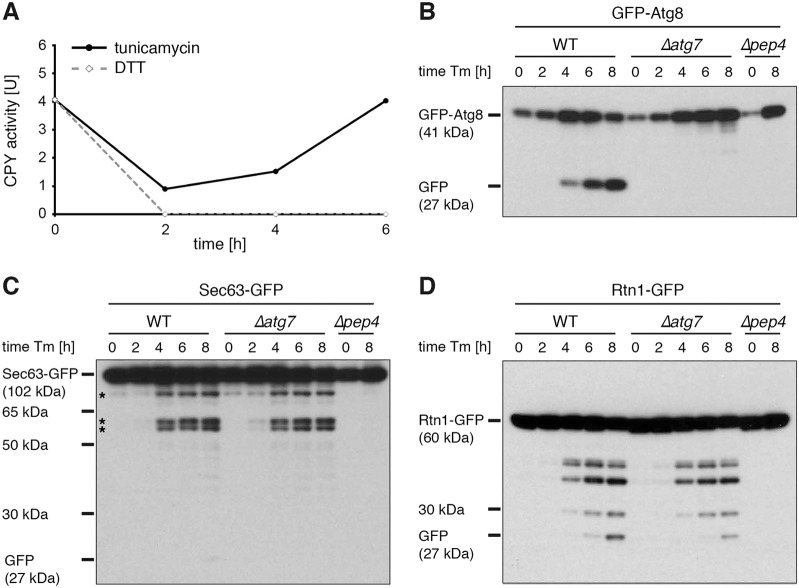Fig. 4.
ER stress triggers a composite autophagic response. (A) CPY activity in enzyme units (U) in tunicamycin-treated and DTT-treated wild-type cells over time. (B) Western blot of GFP from wild-type (WT), Δatg7 and PMSF-treated Δpep4 cells expressing GFP–Atg8 and treated with tunicamycin for the times indicated. Tunicamycin induces the ATG8 promoter so that the overall GFP signal increases with time. (C) As in B, but with strains expressing Sec63–GFP. Asterisks indicate Sec63–GFP fragments of ∼76, 63 and 59 kDa, whose generation required vacuolar proteolysis but not the core autophagy machinery. The GFP-containing cytosolic domain of Sec63–GFP is 76 kDa. (D) As in B but with strains expressing Rtn1–GFP. Tm, tunicamycin.

